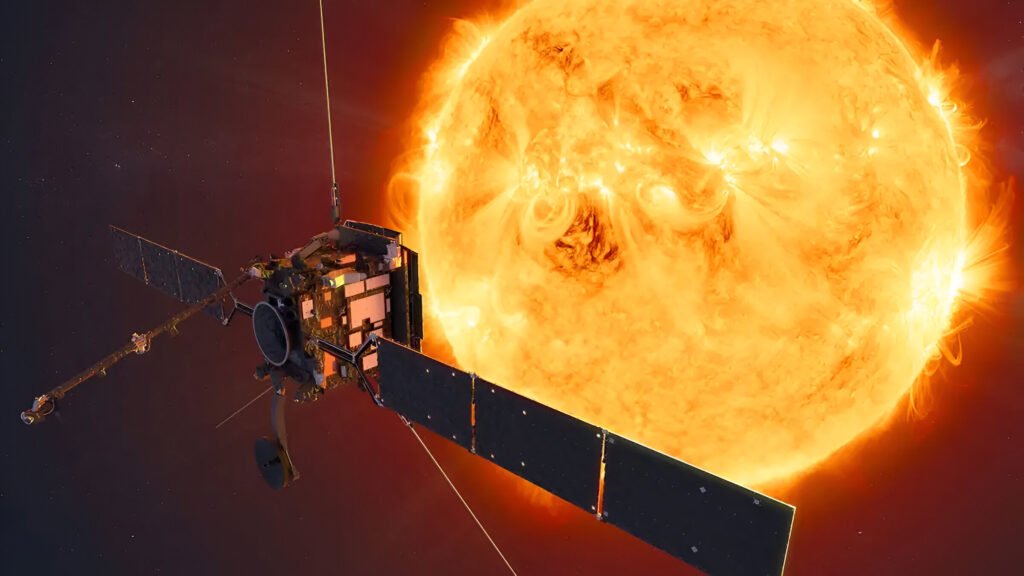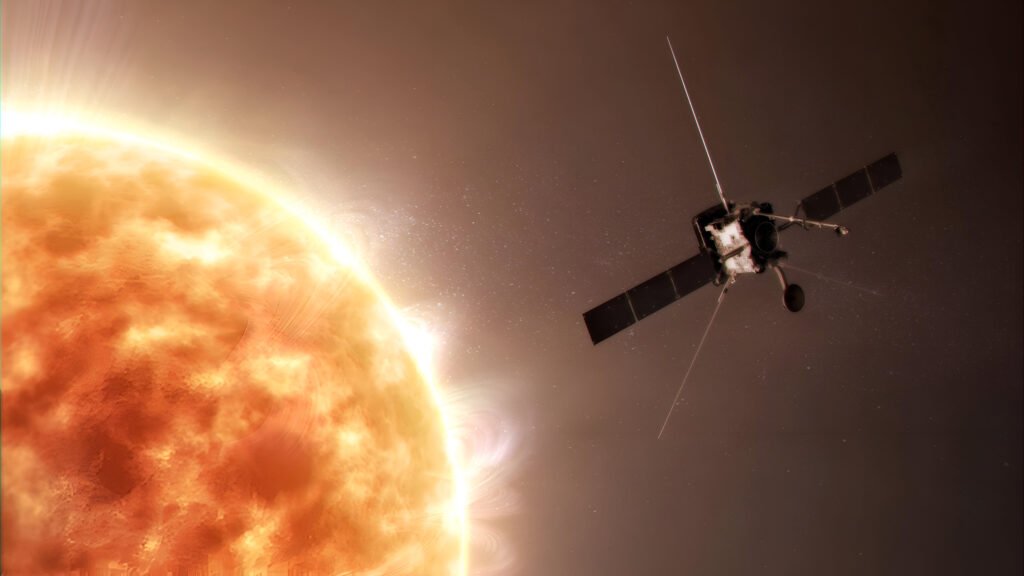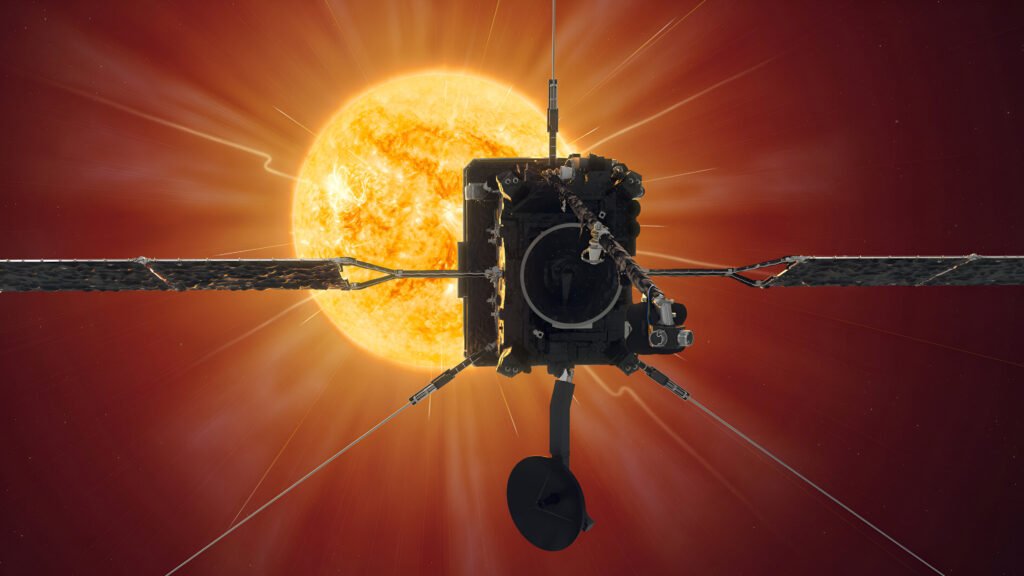
The European Space Agency (ESA), together with NASA, has taken a breathtaking leap in solar science through its Solar Orbiter mission. For the first time in human history, humankind has taken pictures of the Sun’s enigmatic poles, an area essential to understanding our star’s magnetic activity, solar wind, and activity cycles. Unveiled in June 2025, these photographs represent a giant leap as the Solar Orbiter takes on a new frontier in space exploration.
A Sight Never Witnessed Before
Because the Earth and most of the planets travel on a comparatively flat plane called the ecliptic, all previous observations of the Sun have been face-on, equator-centered. The Solar Orbiter changed that. By using a slingshot maneuver around Venus in February, the spacecraft tilted itself 17 degrees below the Sun’s equator, capturing the first-ever image of the Sun’s south pole in March from roughly 40 million miles away. Data from the North Pole is still being transmitted and is expected soon.
This unique viewpoint gives scientists an opportunity to study the poles, which play a pivotal role in shaping the sun’s complex magnetic field, a force that flips every 11 years and drives the formation of sunspots and solar flares.

More Than Just Pictures
What makes these observations groundbreaking is not just the visual perspective but the implications. The Solar Orbiter is equipped with instruments to examine solar wind, plasma, and magnetic activity, all central to space weather. As physicist Hamish Reid from University College London states, “We’ve been missing what’s happening at the top and bottom of the Sun to truly understand the solar cycle.”
Current data suggests both north and south polarities are present at the Sun’s south pole, a typical feature during the solar maximum phase just before the magnetic field flips. This chaotic magnetic environment is now being captured in detail for the first time.
A Mission Years in the Making
Solar Orbiter isn’t the first spacecraft to fly over the Sun’s poles. That distinction belongs to Ulysses in the 1990s. But unlike Ulysses, Solar Orbiter carries powerful imaging equipment. With each flyby, the probe will tilt further, eventually reaching angles beyond 30 degrees to provide even clearer views.
Solar physicist Sami Solanki of the Max Planck Institute calls the current images “just a first quick peek.” More discoveries are expected as the mission progresses.

Why It Matters for Earth
The stakes are high. Sunspots can trigger radio blackouts, GPS interference, and damage to power grids. Improved knowledge of the sun’s poles can revolutionize forecasting models and increase our understanding of the heliosphere, the protective bubble surrounding our solar system from cosmic radiation.
Solar Orbiter is more than a spaceship. It is a portal to the forces that build our universe and a defiant reminder of what we still don’t know.









